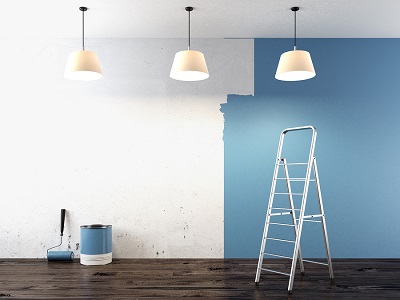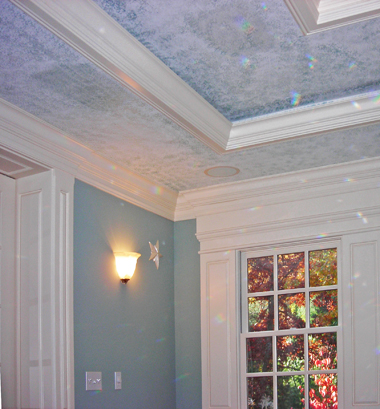Paint has come a long way
Paint and primer are only related in how they look. How they work is totally different. Primer is designed to provide a surface to which paint can easily adhere. It seals small holes and cracks in a surface that can negatively affect a paint job. It also blocks stains that can’t be removed by standard methods.
One question homeowners often have is, When is it okay to use paint-and-primer-in-one on interior walls? Here is the answer.
Use paint-and-primer products on some previously painted walls
If you’re painting over drywall that already has been painted, paint-and-primer combo products often will work well. But note that you’ll get better results the closer you stay to the original shade. If you have dark red walls and want to paint them white, there’s no paint-and-primer product that will give you satisfying results with a single paint coat.
Dark colors will almost certainly bleed through a combo product, whereas if you apply a standard primer, you’ll seal off the original color and the new color will end up being the color it’s supposed to be.
For most other applications, it’s always best to apply a quality primer before painting, the way professional painters do.
Avoid extra coats

It’s important to remember that choosing to not use a primer doesn’t necessarily mean you’ll save time and reduce your steps. Sometimes it means you’ll actually add more work to the job as you paint over and over until there’s so much paint on the walls nothing could bleed through. Save yourself time and cost by starting most interior paint jobs with a good primer.
When painting unpainted walls
Don’t make the mistake of thinking that just because a wall is new and unpainted it doesn’t need to be primed. Drywall is porous and will drink up paint, causing a finish that’s blotchy and uneven-looking. Primer adheres strongly to new walls and provides a surface that’s smooth and consistent for the finish paint.
If you’re unsure if your project is appropriate for paint-and-primer-in-one products, ask your paint store salesperson before you start work. If you want a professional job with a guarantee of an excellent finished product, contact Franklin Painting.
Serving the greater Farmington, Conn., region, Franklin Painting has been amazing homeowners for more than 30 years with the highest quality results and outstanding customer service. Learn more by calling (877) 646-7774.

Frank Campanelli, the esteemed founder of Franklin Painting LLC, has been leading the company since 1986. He takes immense pride in the stellar reputation his dedicated team has built by consistently delivering top-notch service to each customer.



